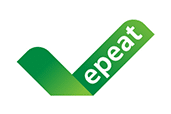Work on the Life Cycle Assessment of your products
Have your products recognized for their environmental qualities, and promote your ecological design approach!
We get your involvement recognized through Life Cycle Assessment (LCA)
Life Cycle Assessment (LCA) identifies and quantifies the physical flows of materials and energy associated with human activities, throughout a product’s life cycle. It assesses potential impacts, then interprets the results obtained according to its initial objectives.
Carry out an LCA of your products to :
- Gain competitiveness in the low-carbon market
- Comply with regulatory requirements and prepare for new certifications
- Meet your customers’ environmental performance requirements
- Reduce your footprint by assessing your energy and carbon impact
- Anticipate rising energy costs and carbon taxes
- Certify and recognize your processes and products to promote your actions
- Unite your teams by involving them in positive-impact projects.
Pink Strategy helps you implement your environmental strategy
- Product life cycle analysis: analysis for internal use (measurement, improvement plan) or external use (communication, regulation), single or multi-criteria study, gate to gate or cradle to grave.
- Eco design: optimizing design to reduce environmental impact and benchmarking studies
- Analysis of return on energy investment: optimization of energy used versus energy produced
- Analysis of return on carbon investment: the carbon return on investiment time is equal to the ratio between the equipment’s carbon footprint over its entire life cycle and the emissions avoided by it over one year. It is therefore necessary to carry out a product-specific carbon audit, even if your organization has its own audit.
- Integrating environmental, social and governance (ESG) factors in the supply chain: extra-financial communication, due diligence
- Support towards certification
Get your processes recognized in positive-impact projects:

PEP / EPD:
These sheets are made public and used by buyers to identify the most virtuous products meeting their requirements.
How do we help you to succeed?
- Data collection on manufacturing sites or from project teams
- Modeling the environmental impact of manufacturing processes
- Valuation of the environmental impact of each element in the cycle
- Formalization of a report and critical review by a third party
This method can be used to support various analyses, such as the carbon or energy master plan, the GHG protocol, the BEGES, the single or multi-criteria LCA, or a benchmark of best industrial practices.
On average, you’ll need between 3 and 6 months to complete the study, but the time required to collect the data is always up to you!

What are the essential prerequisites for accessing the French and European photovoltaic panel market?
ECS is compulsory in France for solar panels used in the construction of photovoltaic power plants in public tenders.
It is eligible for government subsidies.
Our leading partners for the validation and publication of your environmental initiatives

Here are the questions most frequently asked to our team about labelling:
What is an ECS for solar panels?
An ECS (Evaluation Carbone Simplifiée) is a product certificate issued and validated by Certisolis in response to public calls for tenders issued by the Commission de Régulation de l’Energie (CRE) for photovoltaic power plants, as well as the Guichet Ouvert (for installations between 100 and 500 kWp).
To be eligible, the carbon footprint of solar panels must be less than 550 kgCO2e/kWp.
Carbon impact values are determined by life cycle analyses (LCA) carried out in the factories involved in manufacturing a solar panel. These carbon impact values are validated by ADEME. Where no LCA value exists, a default value is used.
For example, the ECS certificate shows the traceability of the supply chain for a carbon score ranging from extraction of raw materials to assembly of the photovoltaic module (cradle-to-gate).
What is a PEP?
An ecopassport® PEP is the environmental identity card for electrical, electronic or HVAC equipment. Based on the results of a Life Cycle Assessment, it is used to calculate the building’s environmental performance.
PEPs provide multi-criteria, objective, quantitative and qualitative informations on a product’s function and lifespan in a building.
These declarations enable manufacturers to:
Anticipate regulatory obligations
Prove the environmental performance of equipment
Provide tools for an eco-design approach
Ensure the transparency of environmental declarations
What's the difference between an FDES and a PEP?
Both are Environmental Product Declarations (EPDs). An FDES includes both the environmental declaration and health information on the product.
PEPs (Product Environmental Profiles) are EPDs governed by the ecopassport® PEP program. This declaration program is aimed specifically at electrical, electronic and HVAC equipment.
What will the future European ecolabel consist of?
PEF (Product Environmental Footprint) is a forthcoming European regulation. It will require companies and SMEs to measure and display the environmental footprint of their products and services, and define the calculation method to be used..









